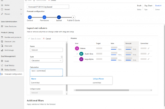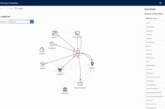One of the most critical processes that a business must master is Quote-to-Cash (QTC). Every department and every channel is involved in this process that begins with a buyer expressing the intention to purchase the goods and services of a business and ends with the business acquiring revenue. Dynamics365 sales solution provides a QTC extension that allows businesses to automate and integrate the QTC process to succeed in the digital economy. Dynamics365 QTC will comprise capabilities that accelerate the end-to-end quoting process. The actions that this extension will enable you to perform are:
- Swiftly generate accurate quotes
- Create contract documents
- Complete deals using electronic signatures (including transactions)
- Accept revenue.

Basic Functions
Microsoft has integrated basic functions to Dynamics365 QTC that puts it at the same level as other QTC solutions. These include:
- Sales templates that can be customized to the type of business or sales. Some businesses sell goods or services that cannot be priced directly since multiple departments are involved. Dynamics365 QTC aims at providing templates for this type of business and those that sell products whose price can directly be quoted.
- For businesses selling intangible goods, Dynamics365 QTC has the product configuration tool that allows them to configure product according to the preference of the customer.
- A pricing engine that facilitates generating prices for products.
- An analytics and reporting tool that permits you to monitor the terminal stages of the quoting process across all quotes and all sales representatives.
New Features
Microsoft has added several adjustments to Dynamics365 QTC that gives it an edge over other QTC solutions to enhance user experience. These are:
- Optimal Screen Usage
An update has been made available for a preview that allows the user to maximize the utilization of screen space. This includes a catalog and price list from which the user can search for the desired product and get its price.

- Product Line Information can be Configured
In Dynamics365 QTC, you can choose what information about the product, the customer can see. You can also choose the products that will appear first on your site when the customer visits it. It also allows you to add products in the dialog box (a feature that will be available in February 2021).
- Product Details
Additional information on products can be added here. Customers can view this information enabling them to gain an insight into what the business is offering. This feature is more consumer-oriented than seller oriented.
- Enhanced User Experience
The addition of product lines from quotes, orders, and invoices will provide the user with a new and improved experience of QTC.

Integration
Numerous businesses have already integrated Dynamics365 into their curriculum. A unified integration with Dynamics365 is therefore essential to ensure business processes proceed without disruption. QTC solutions that do not originate from Dynamics365 cannot be seamlessly integrated into it. The new QTC solution, however, is meant for Dynamics 365 and can be uniformly integrated into it. The 2 can function in tandem to give both the customer and the seller a good experience.
Seamless Automation
Large business organizations prefer to automate their QTC process to realize faster sales cycles and accuracy. Quote to cash involves several processes and departments. The QTC process can be automated using Dynamics365 QTC such that when a customer projects interest in a product, a sales quote is automatically created. This must be followed by sending an email to the customer and automatically converting it to an invoice. The invoice can then be emailed to the customer after the purchase has been made. This would require the employment of Microsoft automation applications such as Power Automate to create workflows that can be triggered after a given action is performed. Since both Dynamics365 and Power Automate belong to Microsoft, automating should not be a problem.
The features discussed here will be available for public review in February 2021 and generally available in March 2021.



